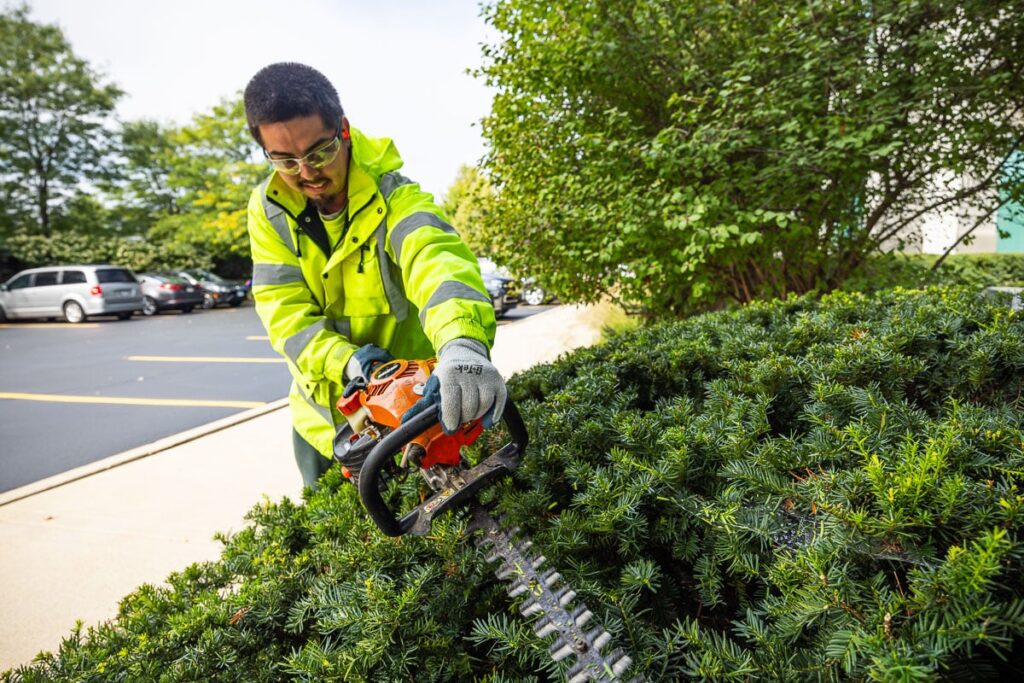Hedge trimming is essential to keeping your landscape neat, orderly, and aesthetically pleasing. Whether you’re looking to enhance privacy, increase curb appeal, or promote the health of your plants, regular hedge maintenance is crucial. But without the right tools, techniques, and timing, you can easily do more harm than good. This guide will provide expert tips on maintaining healthy, beautiful hedges year-round, ensuring you get the best results from your hedge trimming efforts.
Understanding the Importance of Hedge Trimming
Hedges serve many purposes in your garden, including providing a natural boundary, improving privacy, and creating a lush, green backdrop. However, without regular trimming, they can quickly become overgrown, lose their shape, and detract from the beauty of your landscape. Proper hedge trimming ensures that your hedges remain healthy, aesthetically pleasing, and functional. By trimming hedges, you encourage new growth, remove dead or diseased wood, and prevent them from becoming too dense, which can lead to poor air circulation and susceptibility to pests and diseases.
In addition, trimming helps maintain the desired shape of your hedges, making them more attractive and creating a polished, well-maintained appearance for your garden. If you’re looking for reliable tips to get started, let’s explore some key factors you need to consider when it comes to hedge trimming.

1. Choosing the Right Tools for Hedge Trimming
One of the most important aspects of hedge trimming is having the right tools. The tools you use can make a significant difference in the quality of your trim and the health of your plants.
Essential Hedge Trimming Tools:
- Hedge Shears: Ideal for smaller hedges and fine trimming.
- Electric or Battery-Powered Hedge Trimmers: Great for medium to large hedges, allowing for faster and more precise cuts.
- Pruning Shears: Perfect for trimming individual branches and maintaining the health of the hedge by removing dead or damaged branches.
- Loppers: Best for cutting thicker branches and reshaping overgrown hedges.
Always ensure your tools are sharp, clean, and well-maintained to make clean cuts, reduce plant stress, and avoid spreading disease.
2. Timing Your Hedge Trimming for Optimal Growth
Knowing when to trim your hedges is just as important as how you trim them. The best time for hedge trimming largely depends on the type of hedge and the climate.
General Hedge Trimming Guidelines:
- Evergreen Hedges: Trim these once or twice a year, usually in late spring or early summer after the first growth spurt. Avoid trimming in late summer or fall as new growth may not have time to harden before winter.
- Deciduous Hedges: Prune in late winter or early spring before new growth starts. Light trimming throughout the growing season is beneficial for shaping.
- Flowering Hedges: For hedges that flower, like lilac or forsythia, trim after they bloom. This ensures you don’t cut off buds for next year’s flowers.
For best results, avoid trimming in extreme weather conditions, such as very hot or very cold temperatures, as these can stress the plants and slow their recovery.
3. Best Techniques for Hedge Trimming
Using the right trimming techniques is key to maintaining the shape and health of your hedges. Whether you’re creating formal hedges with straight lines or informal, natural-looking ones, the following tips will help you achieve professional-looking results.
Tips for Successful Hedge Trimming:
- Top-to-Bottom Cutting: Always start trimming from the top and work your way down. This allows you to see the overall shape as you go.
- Taper the Hedge: Keep the top of the hedge slightly narrower than the bottom. This tapering ensures that the lower branches receive enough sunlight, preventing them from thinning out.
- Trim Lightly and Frequently: Light, regular trimming is better than heavy pruning once a year. Frequent trimming encourages dense growth and keeps the hedge looking neat.
- Cut at an Angle: For more precise and clean cuts, hold your trimmers at a slight angle when trimming branches. This promotes water runoff, reducing the risk of disease.
Following these techniques will not only make your hedges look better but also keep them healthier in the long run.
4. Addressing Common Hedge Trimming Mistakes
Despite your best efforts, mistakes in hedge trimming can happen. Some common errors can damage the health of your hedges or lead to unsatisfactory results. Here’s how to avoid them:
Common Mistakes and How to Fix Them:
- Cutting Too Much at Once: Avoid cutting back too much of the hedge at once, especially older wood, as it can stunt growth and leave bare patches. Instead, trim lightly and consistently.
- Uneven Cuts: Use a string or guide to ensure straight cuts, especially for formal hedges. Uneven cuts can make the hedge look lopsided and unsightly.
- Cutting at the Wrong Time: As mentioned earlier, trimming during the wrong season can weaken your hedge. Stick to the recommended timing based on your hedge type.
Avoiding these common pitfalls will ensure that your hedges remain healthy and grow back stronger.
5. Pruning for Health: Managing Pests and Diseases
While hedge trimming is primarily about shaping and maintaining appearance, it’s also essential for the health of your hedges. Pruning can help prevent and manage pests and diseases.
Pest and Disease Prevention Tips:
- Remove Infected Branches: Regularly inspect your hedges for signs of disease or infestation. Cut off any affected branches immediately to prevent the issue from spreading.
- Promote Air Circulation: A dense hedge with poor air circulation can become a breeding ground for pests and fungi. By trimming regularly and ensuring proper tapering, you allow better airflow through the branches.
- Clean Your Tools: After each use, clean your trimming tools to avoid spreading diseases between plants.
By following these simple health-focused trimming practices, your hedges will remain resilient and pest-free.

6. Post-Trimming Care for Healthier Hedges
After trimming, it’s important to take a few extra steps to care for your hedges. This ensures they recover quickly and continue growing healthily.
Post-Trimming Tips:
- Watering: Right after trimming, give your hedge a deep watering to help it recover from any stress.
- Fertilizing: If your hedge is showing signs of slow growth or yellowing leaves, consider applying a balanced fertilizer in the spring to encourage healthy new growth.
- Mulching: Adding a layer of mulch around the base of the hedge helps retain moisture, suppress weeds, and improve the overall health of the soil.
With the right post-trimming care, your hedges will thrive and look great throughout the year.
7. When to Hire Professional Help for Hedge Trimming
While trimming small hedges is manageable for most homeowners, there are times when hiring a professional may be the best choice, especially for larger or more complex jobs.
Benefits of Hiring Professional Hedge Trimmers:
- Expertise: Professionals have the knowledge and experience to trim hedges in a way that promotes optimal growth and health.
- Proper Equipment: Large hedges or intricate shapes may require specialized equipment that only professionals have.
- Time and Effort: Trimming large hedges can be time-consuming and physically demanding. A professional service can save you time and ensure the job is done efficiently.
If your hedges are overgrown or require specialized attention, it’s worth considering professional hedge trimming services.
Conclusion: Keep Your Hedges in Top Shape Year-Round
Regular hedge trimming is essential for maintaining healthy, attractive hedges that enhance your landscape. By choosing the right tools, timing your trims properly, and using the best techniques, you can achieve beautiful results and encourage strong, healthy growth. Remember to avoid common mistakes, care for your hedges after trimming, and don’t hesitate to call in a professional when needed. With these tips, you’ll be well on your way to keeping your hedges in perfect condition year-round.
By mastering the art of hedge trimming, you ensure that your garden remains a lush, green haven for years to come.